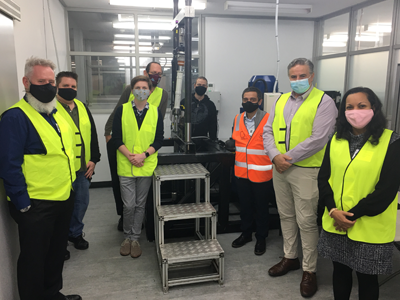Applying digital twins to the land domain

In collaboration with Flinders University and South Australian automotive business, Supashock, DSTG is exploring how digital twins can be used in the preventative maintenance and condition monitoring of military land vehicles.
While the concept of a digital twin – a virtual representation of a physical object - is not new, applying the technology in the land domain is.
DSTG Digital Logistics Specialist, Nicholas Brealey says that the research is aimed at developing a more authentic digital twin.
‘Many current digital twins have been diluted to focus predominantly on a software simulation with only initial one-way transfer of data,’ he explains.
‘This research creates a more comprehensive digital twin as it focuses on the real-time two-way transfer of data and the ability of the digital twin to initiate action in the physical vehicle.’
Rather than building a digital twin of an entire vehicle, the team is building a virtual representation of a specific component – in this instance, a shock absorber. This should enable the team to determine if a group of component digital twins is more cost-effective than modelling an entire vehicle.
This research is a continuation of DSTG’s work in the area of sense and respond logistics – a system of networks and sensors providing real-time intelligence to enable an agile and responsive supply chain.
Work undertaken in 2019 with the three South Australian universities and Supashock concentrated on detecting shock absorber failure and the team hopes that this current research will demonstrate that a digital twin can augment sense and respond logistics.
‘In addition to exploring the cost-benefit analysis, we’ll be using the project to investigate possible integration issues that may impede the use of digital twins for land vehicles, and to examine the role that a human decision-maker must play,’ Brealey says.

